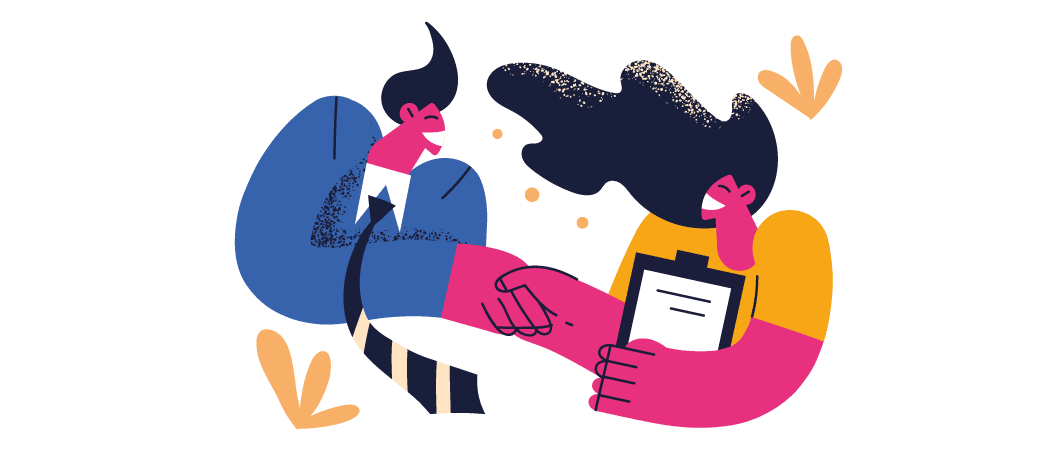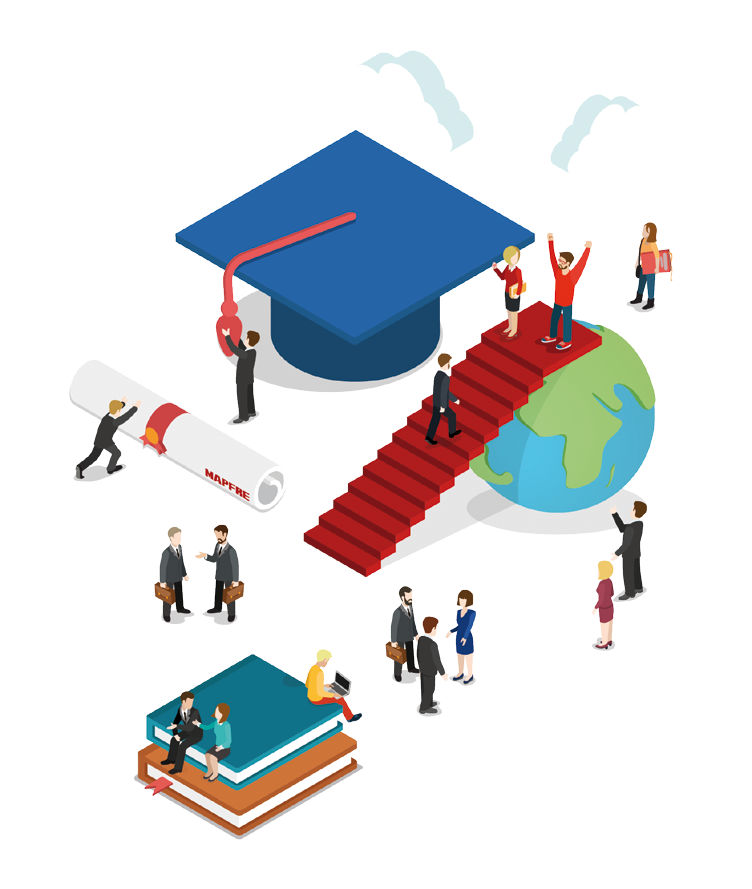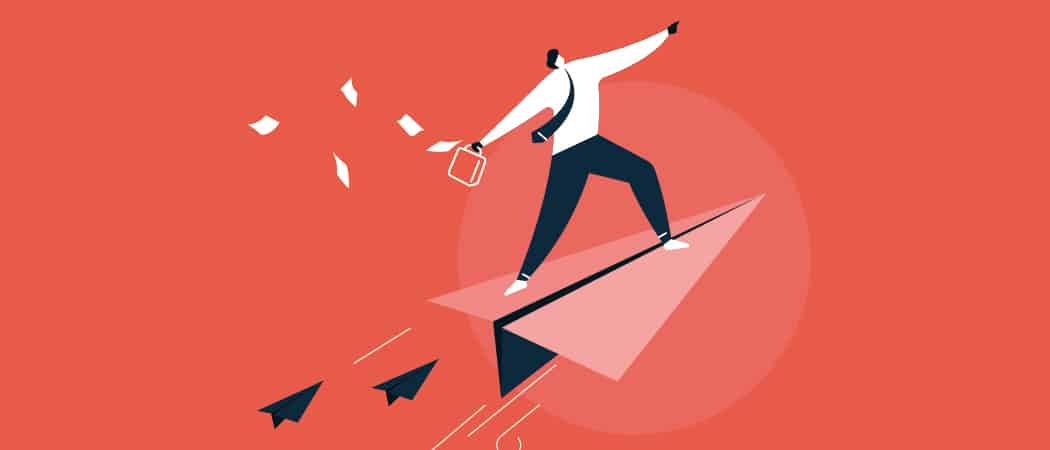TEXT SARA ELENA TORRES HORTAL | IMAGES ISTOCK
We have changed our perception with respect to the organization, and we care more and more about our status, aspirations, satisfaction, and happiness at work.
As people change, people management must also evolve to respond to our new needs. At this time of transformation, the People and Organization areas must be key players in the sustainable growth of companies.
In this issue we propose a trip through time, taking stock of the progress that has been made in people management over the last 10 years to continue driving the transformation we started a decade ago.
What progress have we made within our organization in terms of people management?
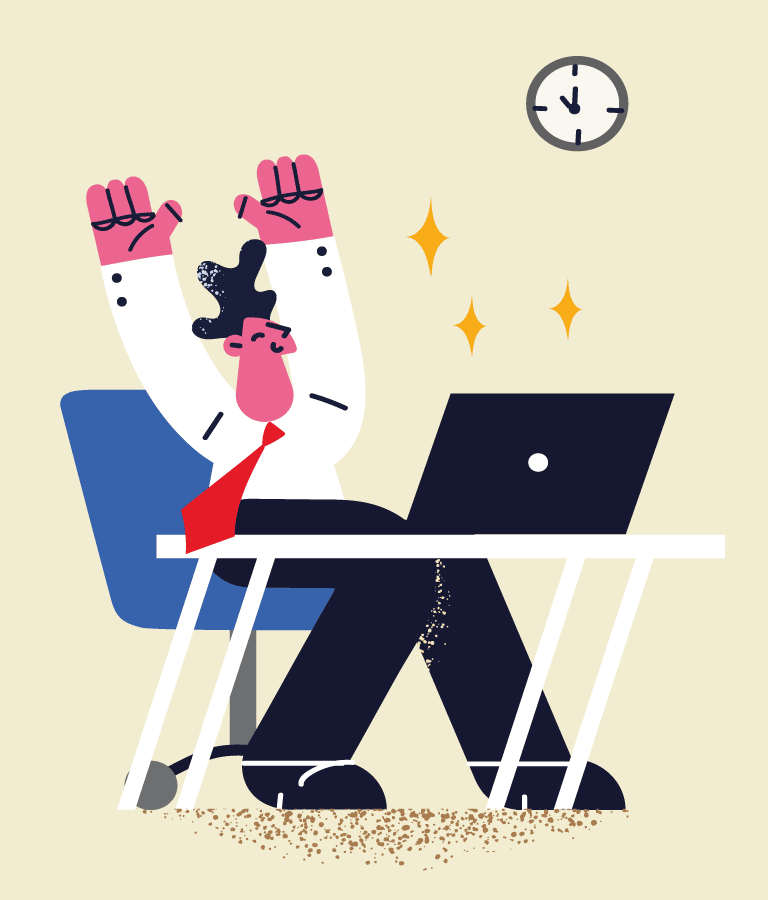
Digital transformation
The technology that has left its mark on everyone and everything. It has transformed business, the way we work, the way we relate to each other, and how we understand the labor environment. It has changed the way we understand organizations.
At MAPFRE, this transformation was called the Digital Challenge, and it applied to all areas of the company. During its initial phase, the Challenge brought a new environment that offered us greater flexibility and tools to work collaboratively and share knowledge, as well as a new culture based on collaboration, innovation, and agility and a new way of evaluating performance. The next phase, starting in 2020, brought new skills and work habits and project-based management, a model that adapted how we work to each project and which extended project-based work to spheres that had not used it until then.
A key component of digital transformation is data. In recent years, people management systems have been automated and integrated and are now global, and the quality of data has improved, allowing for improved decision-making that benefits both the business and people. For example, in the latest phase starting this year, we will be able to know the degree of knowledge our job position covers to better prepare our development plans and identify the openings we can access and those we have indicated as our preferences.
Technology and tools have been leveraged to improve communication with employees, taking a different approach that seeks to inform us of what we are interested in and encourage us to participate. The global intranet, which entered into service in 2016, and the People App, which was launched in 2019 and is already in seven countries (Germany, Brazil, Spain, Mexico, Turkey, Peru, and Puerto Rico), are examples of this.
Listening
One of the concepts that has revolutionized the People and Organization space in the last decade.
Over the past ten years we have consolidated a culture of continuous listening with employees, harmonizing our needs as employees with those of the company and moving from periodic “climate surveys” to a permanent listening model. This process pushes us to constantly review our employee net promoter score (eNPS), our employee satisfaction index (ESI), and our experience throughout the entire life cycle.
Focusing on the employee and personalizing our experience has also led to the development of the management of change function, which accompanies us in all the change processes we undergo at the company.
Technology has left its mark on everyone and everything. It has transformed business, the way we work, the way we relate to each other, and how we understand the labor environment. It has changed the way we understand organizations.
Over the past ten years we have consolidated a culture of continuous listening with employees, harmonizing our needs as employees with those of the company and moving from periodic “climate surveys” to a permanent listening model.
Talent
Talent management has evolved over the last 10 years with the implementation of the single global talent management model. This mainly involves identification, development, and loyalty, ensuring not only that business needs are met by having the right profiles (including the new professional profiles of tomorrow) but also that management succession plans are in place.
The past years have seen learning become globalized in all senses — including the platform and management model and the design of training resources — producing a learning experience that is linked to the business strategy and is as complete, positive, and personalized as possible. The creation of the Corporate University, which was launched in September 2014, is its most representative piece, and through it — and its schools and knowledge rooms — we implement the training plans and itineraries that we have for our employees.
Elsewhere, learning processes were digitalized, hybrid routes were deployed (face-to-face, online, and hybrid), gamified programs were developed, and the Global Digital Language Learning Model and Self-Learning were implemented. The latter is a unique common space and open training catalogue where employees can access resources that interest them and design their own learning itinerary. We also have an automated employee-to-employee recommendation system. Last year, all employees underwent more than 11 training actions in different knowledge areas. We have all been trained in the new conduct and habits of Culture in a Digital world: Collaboration, Innovation, and Agility, as well as Communication and Respect, for leaders.
The company has stressed the six characteristics common to all leaders: being Digital, Value-driven, Strategic, Transparent, a Learning Leader, and a Knowledge Leader.
One hundred percent of employees received more than 30 training hours in 2021.
We also rolled out our MAPFRE Universities Plan, which aims to leave our “MAPFRE Footprint and Brand” on the world of education through three lines of action: disseminating insurance culture in universities and schools, providing development opportunities for young people through internships in our companies, and sharing and exchanging knowledge. We are also developing in-company programs for our employees and informing them of training opportunities and the catalogue of university programs with special conditions for MAPFRE employees.
The past years have seen learning become globalized in every sense of the word — including the platform and management model and the design of training resources.
The company designed the Hybrid Model of remote working, allowing countries and businesses to decide on combining in-person and remote working, and flexible schedules were implemented in all countries
In order to promote internal mobility, one of our main levers of professional development, we launched a global internal platform to allow employees to apply and refer people. In 2021, 13.7% of the workforce (4,177) changed position.
A job website was also created to allow candidates to apply for any vacancy across the world. 1,400 openings were published on www.Jobs.mapfre.com in 2020.
The performance evaluation has been transformed into a single annual global model with continuous feedback on our objectives, activities, and conduct. Not only do we do a self-assessment, but we also involve our supervisor, peers, and internal customers. The evaluation focuses on the achievement of objectives and the adoption of MAPFRE conduct.
Management by Objectives (MBO) is a key part of the evaluation process and was also implemented to align our work with the company’s strategic objectives and plans. Always connected to the business and increasingly personalized, MBO forms part of the organization’s strategic planning.
Our development includes Knowledge Management, which MAPFRE implements to encourage knowledge sharing and which requires a specific a space to do so, so that we can leverage and maximize our knowledge. The name of the space is eureka, and by August 2022, it had already offered more than 2,400 pieces of knowledge and had more than 1,500 knowledge references.
This past decade also saw the arrival of the professional profile, where employees upload their knowledge (experience, training, languages, projects, expertise, mobility interests) so that the People and Organization teams can manage and offer us development opportunities. Likewise the onboarding process has been personalized to improve the employee’s experience and now accounts for the learning curve.
Alongside the implementation of the recognition programs, progress was made in the way we recognize our effort, dedication, and commitment. More than 21,000 employees in 22 countries participate in these programs, and more than 4,000 have been distinguished for their contribution to the implementation of MAPFRE’s strategy, quality contributions, innovation, and dissemination of MAPFRE’s culture and values.
Organization
Over the past decade, MAPFRE also began promoting initiatives to advance flexibility and improve the balance between work and personal and family life. In an effort to continue adapting to the new reality, and considering that flexible working hours combined with the possibility of providing services remotely may blur the boundaries between work time and time for rest and leisure, MAPFRE launched the Policy regulating MAPFRE employees’ right to disconnect, as well as the Telematic Code, which establishes the criteria for the use of and access to corporate digital devices. The Code is already applicable in Spain and is in the process of being implemented in the remaining countries.
Always at the service of business, and accompanying countries in their strategic positioning, organizational management has evolved and globalized in recent years. How? By, among other methods, following the implementation of a common technological system for people management and the establishment of the same organizational elements (functions and job positions) and operational models, which allow countries greater flexibility, autonomy, and agility in decision-making.
a global job evaluation system to analyze the contribution of each job position in the organization’s value chain, as well as unified remuneration comparison systems and a calculation methodology for analyzing gender pay differentials.
Diversity has become a priority in recent years. We need to feel at ease when working, considering our talents above all else.
This organizational understanding has enabled us to improve the company’s capacity by working together with the countries on the Workforce Evolution Protocol, which provides a detailed view of capacity and workforce forecasts by country and globally.
The move towards dynamic structures is allowing us to be flexible and dynamic by continuously adjusting capacities and encouraging versatility in the workplace to develop an organization that can adapt quickly to the needs of the business, combining day-to-day management with participation in projects and adapting the level of autonomy of the teams to the needs of each project.
The creation of these flexible structures has been fundamental in establishing a new operational model of project management that suits the different types of projects and extends and standardizes project work across areas. The global model (playbook) covers aspects such as project management training and collaborative tools, methodology, responsibilities, and roles of the different members of a project team, tools, and project capacity analysis. It also includes a website to provide support and advice.
In addition to this model, processes such as evaluation, remuneration (project bonus), and recognition have been adjusted. The aim of the model is to develop autonomous interdisciplinary work teams that encourage people to participate voluntarily.
MAPFRE approved the Health and Well-being and Occupational Risk Prevention Policy, which upholds health as part of the company’s people management strategy.
the Global Disability Program, with its various actions focused on the integration of people with disabilities and family members with disabilities into the workplace or the methodology used to measure the impact that the integration of people with disabilities into the workplace.
Remuneration
Following the approval of the Compensation Policy, this decade has produced different forms of remuneration to match the new ways of working. Elsewhere, MAPFRE developed a global job evaluation system to analyze the contribution of each job position in the organization’s value chain, as well as unified remuneration comparison systems and a calculation methodology for analyzing gender pay differentials. By 2024, MAPFRE has committed to reducing its gender pay gap to within +/-1%.
Diverse teams and environments
Diversity has become a priority in recent years. We need to feel at ease when working, considering our talents above all else.
Following the approval of the Diversity and Equal Opportunities Policy in 2015, this decade saw the arrival of the Global Disability Program, with its various actions focused on the integration of people with disabilities and family members with disabilities into the workplace (in 2021, we reached our commitment of having 3.5% of employees with a disability), as well as the methodology used to measure the impact that the integration of people with disabilities into the workplace has on MAPFRE, among others.
Also noteworthy is the increase in the number of women in leadership positions (now 45%), one of MAPFRE’s commitments during its previous strategic plan; the creation of the Women’s Leadership Networks in Spain, Brazil, the United States, Mexico, Peru, and Turkey, whose main actions included the Conversations for Leadership (Spain); and active participation in actions promoted outside the company, including our adherence to the UN Women’s Empowerment Principles and our entry into the Bloomberg Gender Equality Index, which distinguishes companies for their promotion of equality and their transparency in reporting on gender issues.
When it comes to generational diversity, MAPFRE is aware of the consequences that the increase in life expectancy is having on employment, the inversion of the population pyramid, and the lengthening of people’s working lives in many countries, and has launched the Ageing Project in Spain in response.
As part of its commitment to giving visibility to its stance on defending the rights of all people, regardless of their sexual orientation, gender identity, and expression, MAPFRE signed the UN’s LGBTI+ Standards of Conduct for Business in 2020.
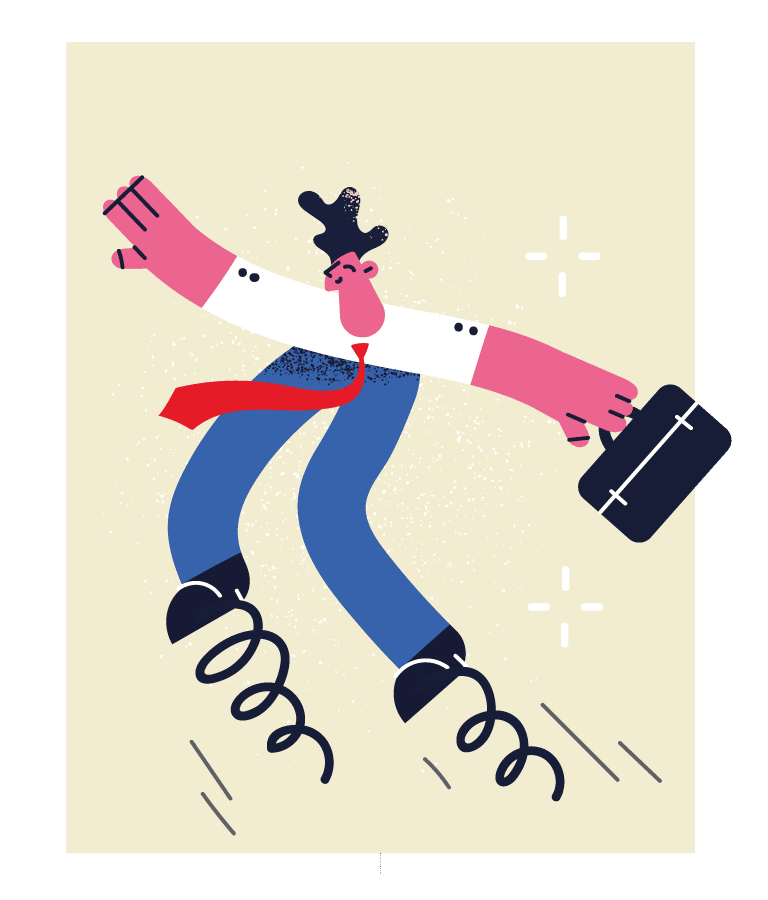
En todos los proyectos de gestión de personas MAPFRE tiene presente la sostenibilidad social y la mejora constante en la calidad del empleo y la empleabilidad de las personas.
Comprehensive well-being
Concerned about the health and well-being of people, whether employees or family members, MAPFRE approved the Health and Well-being and Occupational Risk Prevention Policy, which upholds health as part of the company’s people management strategy. This led to the launch of the Global Healthy Company Management Model, in accordance with the guidelines established by international organizations. A people-centered model, it considers health and well-being from a work and personal point of view and has sparked numerous global and/or local health awareness campaigns. 313 were conducted in 2021.
During the pandemic, MAPFRE quickly deployed its contingency plans and implemented numerous measures to take care of its employees’ health above all else. These COVID-19 protocols have been certified by AENOR in Colombia, Chile, Ecuador, Spain, Peru, Uruguay, and Venezuela.
As a result, you will achieve comprehensive self-development, and the People and Organization area will provide you with everything that you, your supervisor, the team, a project, etc. need at any given time.
During the pandemic, MAPFRE quickly deployed its contingency plans and implemented numerous measures to take care of its employees’ health above all else. These COVID-19 protocols have been certified by AENOR in Colombia, Chile, Ecuador, Spain, Peru, Uruguay, and Venezuela.
Solidarity
MAPFRE’s contribution to society is centered on volunteering. This decade saw the inception of its Corporate Volunteering Program, through Fundación MAPFRE, which allows us and our family members to participate in activities on an ongoing basis. More than 4,700 of us volunteered last year. This program contributes to the Sustainable Development Goals (SDGs) of the United Nations 2030 Agenda. Our company also has its own methodology that measures the impact of volunteering on the SDGs.
Another solidarity-based project born this past decade is ‘Juntos Sumamos,’ held in conjunction with the ‘Euro Solidario’ campaign in Spain, which has already been running for five editions, and the ‘Together we Give’ program in the USA.
All of MAPFRE’s people management projects prioritize social sustainability and the continuous improvement of the quality of employment and employability of people. Such is MAPFRE’s commitment to its people.
Where should we go from here?
In the last edition of THE WORLD OF MAPFRE, we explained the new human resources strategy for 2022-2024, which focuses on organizational management of change. Over the past decade we have put in place all the tools needed to tackle this organizational change over the three-year period. This change will focus on transforming capabilities, greater organizational agility, and flexibility, which implies less hierarchy and more participation in projects, as well as transformational leadership that supports and fosters the development of the people on the team.
As a result, you will achieve comprehensive self-development, and the People and Organization area will provide you with everything that you, your supervisor, the team, a project, etc. need at any given time.
We look forward to starting this new strategic cycle with complete confidence that we will continue to make progress on all our objectives.
Now is that a challenge, or what? And most importantly, everything revolves around you!
Some data for 2021
83%
Employees with flexible working hours
90%
Employees with technological mobility
88%
Employees with collaborative tools
1300
Benchmarks in the knowledge management platform (Eureka)
100%
Employees trained in new knowledge areas and habits
94%
Employees with 360° evaluation
+95%
Employees with an eNPS rated as good or very good
73%
Users of the People App (7 countries)
49
Pilot projects in 7 countries according to new project-based operating model
31.5%
Employees with a career or personal development plans

